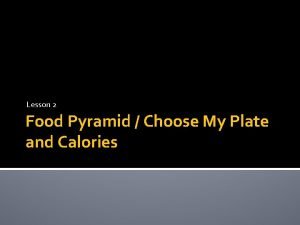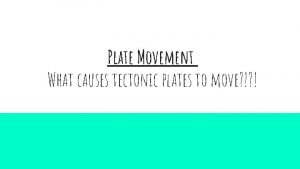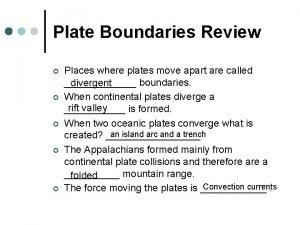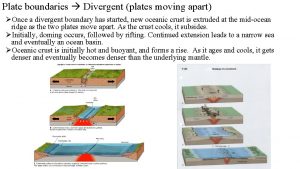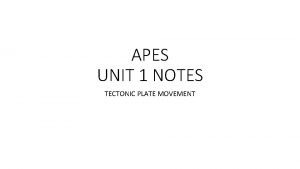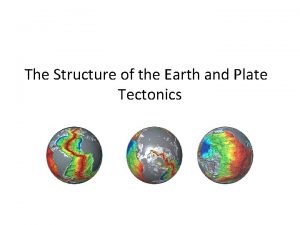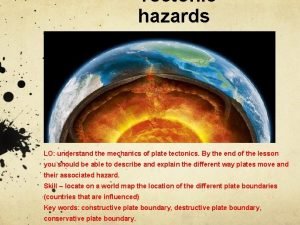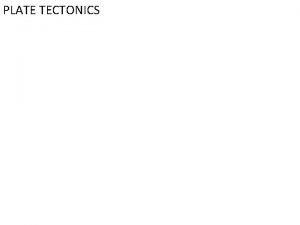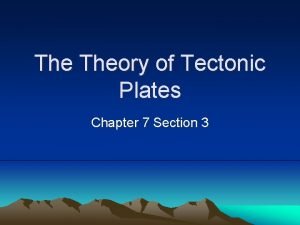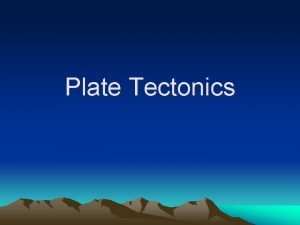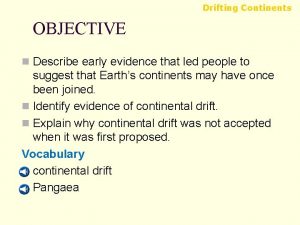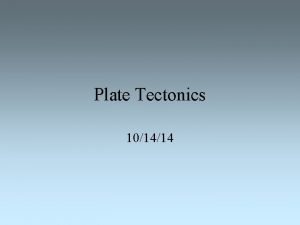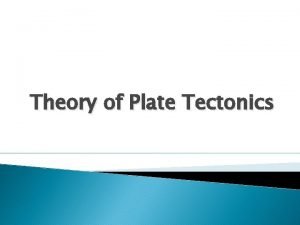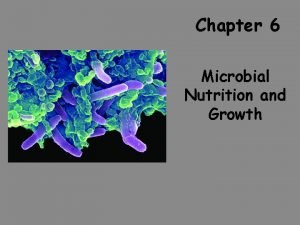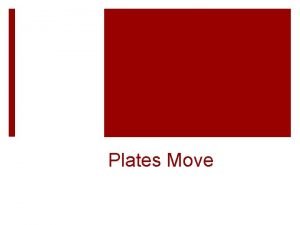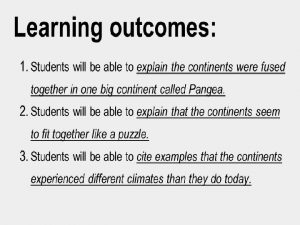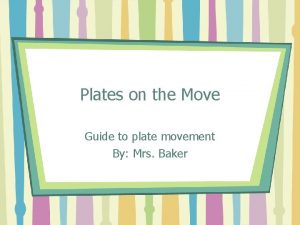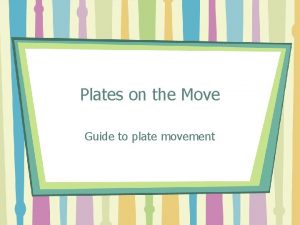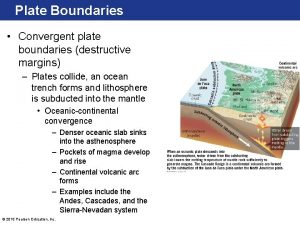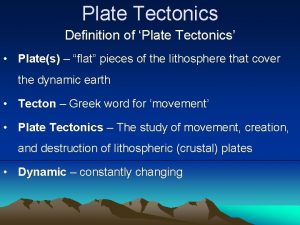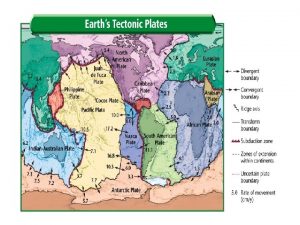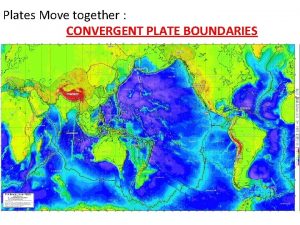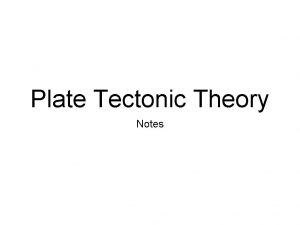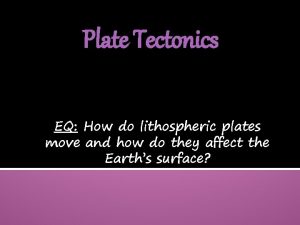Plates on the Move Guide to plate movement

















- Slides: 17

Plates on the Move Guide to plate movement

There are three types of plate movement

1. Divergent • • Also known as seafloor spreading Plates are separating from each other as a new land mass forms This is seen at mid-ocean ridges and rifts Plate separation is a slow process. For example, divergence along the Mid Atlantic ridge causes the Atlantic Ocean to widen at only about 2 centimeters per year. Picture from www. geology. com Author Hobart M. King

The Great Rift Valley- Africa

Rift valley • http: //www. youtube. com/watch? v=w 7 Y 2 R 4 KB wvo

2. Convergent • Two continental plates collide. & crumple the edges of the plates & form mountains. • We can see the end result of the collision between the Indian & Eurasian plates which are the Himalayan Mountains. Picture from www. geology. com Author Hobart M. King Picture from USGS

Convergent Boundaries 1. Two plates come together. 2. The denser plate will sink. 3. Oceanic plates are ALWAYS denser than continental plates. 4. If two oceanic plates come together, the denser one will sink. 5. If an oceanic plate and a continental plate collide, the oceanic plate will sink and the area will be a subduction zone.

6. When two continental plates collide, mountains form. Neither plate will sink. 7. Faults are a break in earth’s crust.

Convergent- Himalayan Mtns.

Subduction • When an oceanic plate goes underneath or is subducted under a continental plate it is called subduction. • This forms a trench, or deep valley, where the plates meet. • An example of a subduction zone is the Marianas Trench where the Pacific Plate is subducting under the Eurasian Plate. • Subduction is another type of a convergent plate movement. Picture from www. geology. com Author Hobart M. King

Subduction and the mantle

3. Transform • Two plates slide past each other – Example: San Andreas Fault in California Picture from www. geology. com Author Hobart M. King

Transform- San Andreas Fault

Fault Lines, stress and earthquakes

Fault Lines and Earthquakes


Divergent Convergent Transform
 Choose my plat.gov
Choose my plat.gov What causes tectonic plates to move? *
What causes tectonic plates to move? * Places where plates move apart
Places where plates move apart Divergent limits
Divergent limits Apes frq plate tectonics
Apes frq plate tectonics Struture of the earth
Struture of the earth Tectonic plates move
Tectonic plates move A plate
A plate What causes tectonic plates to move? *
What causes tectonic plates to move? * Oceanic oceanic convergent boundaries
Oceanic oceanic convergent boundaries Two plates spread or move apart at what boundary
Two plates spread or move apart at what boundary Plates move apart at ____ boundaries.
Plates move apart at ____ boundaries. What plates move apart
What plates move apart Tectonic plates interact at places called plate
Tectonic plates interact at places called plate What has roads but no cars rivers but no water
What has roads but no cars rivers but no water Spread plate vs pour plate
Spread plate vs pour plate Pure cultures
Pure cultures Chapter 6 microbial nutrition and growth
Chapter 6 microbial nutrition and growth
